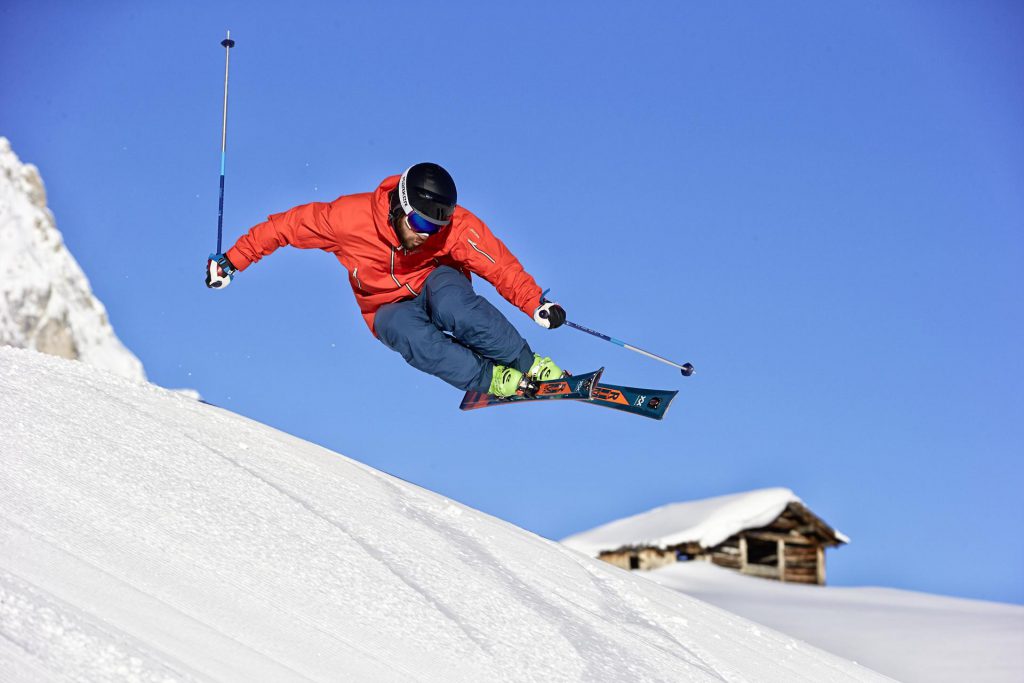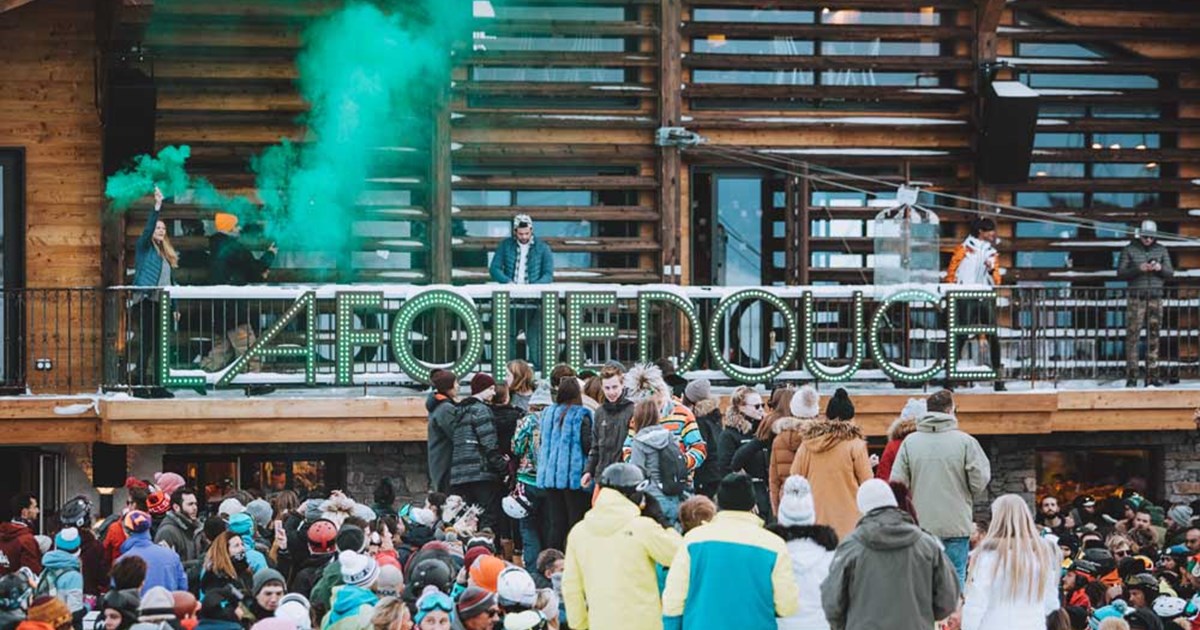It’s More Fun When You’re Fit: How to Physically Prepare for Skiing and Snowboarding
PAUL BEARD
There’s no doubt about it: skiing and snowboarding are fun. Whether you’re hurtling down the side of a mountain on your snowboard at 40 mph, or exploring backcountry terrain on one of our
off-piste skiing courses with your new powder skis, snowsports always bring about a sense of excitement and adventure.
But here’s the thing:
skiing is much more fun when you’re physically fit. ‘There is nothing worse than having to head in early from the slopes because you’re tired or sore,’ says sports medicine specialist Dr. William Roberts
interviewed in The Wall Street Journal.
Dynamic, active skiing or boarding demands a combination of both technique and the muscle strength and flexibility to keep yourself balanced and able to accurately steer your way down the slope run after run. Over the course of a day on the mountain you’re going to be working
a lot of the same leg and arm muscles used when running and cycling – and develop some of the same strength and stamina you’d get from those sports, too.
In other words: spending your time on the ski hill might seem like a purely enjoyable experience, but if you’re doing it right then it should also come with its fair share of hard work.
So if you’re spending your hard-earned cash on an extended trip to the mountains, you really can’t afford to be lazy. Hit the slopes underprepared and it can be really easy to burn out. Whether you’re looking at
starting a career in instructing, or thinking about taking a break on a
ski or snowboarding course, I’ve got some useful ideas on how to give yourself a good head start.
WHAT KIND OF FITNESS IS NEEDED TO BE A GOOD SKIER?
There are few sports that exercise as many areas of the body as skiing and snowboarding.
Creating the angles necessary for high-quality carving requires flexibility, particularly in the hips and lower body. Equally the constant vibrations and other forces acting on the body ensure that the leg muscles – not least the quads and hamstrings – and core muscles are constantly being used to make small readjustments to maintain your speed and balance.
Skiers also need decent stamina (known as aerobic fitness, the same kind needed to run long distances) if you want to have enough energy to last the day, and anaerobic fitness – the kind needed to perform short sprints.
Because skiing involves stamina and short-burst aerobics, the most effective preparation is a combination of high-intensity training and longer, more sustained efforts. The key to the training is to maintain a high heart rate, concentrating on short sprints. Exercises that require short bursts of intense activity are ideal.
Really though, anything that gets you out of breath will be strengthening your heart, and improving your lung capacity. Walking, running, and swimming are all good ways to work your cardiovascular system, and cycling is an excellent way to ensure your muscles are toned and limber.
There’s are some other ways you can put yourself in prime position to succeed in your ski boots, like optimising what you eat and developing your technique. But we’ll get to that in a minute.
WARM UP PROPERLY AND TRY YOGA FOR BETTER FLEXIBILITY
Even a professional can expect to regularly fall, so it’s essential for skiers and snowboarders to be supple. Dedicating time to warming up and paying particular attention to staying flexible is key.
Skiing is unique in the way that it pulls on your limbs and puts pressure on your hips and lower body, so warming up properly before you start will help enormously.
Anything that loosens up your hips and moves your pelvis will increase your range of movement. Hip flexors are important – with the amount of time people tend to spend at desks and in front of computers these days, hip flexors are often a tight and inflexible area. Not such a big deal if you spend your days in an office, but a definite problem and source of discomfort when you’re working on ski technique.
Likewise, stretching after workouts is crucial to a fast recovery. A thorough warm up and warm down regime is therefore something all advanced riders should develop for themselves, and it’s something we always explain in great detail and encourage during the courses on offer at Alltracks.
Aside from warming up and warming down, yoga and pilates are two great forms of exercise worth exploring. They can help build up core strength (more on that in a moment), improve your posture, and can also improve technique, coordination, and correct any muscle imbalance – significantly reducing the risk of injury.
This might all seem like a pain to begin with, but keep at it. The improved flexibility you’ll experience will ensure that you get the most out of your time spent skiing or snowboarding.
SIMPLE EXERCISES TO IMPROVE CORE AND MUSCULAR STRENGTH
Skiing requires a strong abdomen, and powerful legs. If you can keep these muscles toned with a good exercise regime, you’re less likely to grow tired. If fatigue creeps in, your form can start to deteriorate, and then you’ll quickly lose strength and find it difficult to last the day.
There are many ways to increase your posture, balance and core strength. Squats, lunges, and jumps are all good and you can significantly strengthen your abdominals, back, and hips with the use of a stability ball.
Like gymnasts, skiers usually have a high strength to weight ratio, and maintaining this ensures that stress to bones, muscles, and ligaments is kept to a minimum. In the gym, lift lighter weights with more repetitions, and focus on those exercises that use your own bodyweight like sit ups and pull ups.
Although lifting weights can be useful for overall fitness, it’s more effective to concentrate on your legs and back. A great way of working the thighs is to use a squat machine, and the wall sit is a good method to replicate the way in which the muscles move during skiing – you’re always adjusting your position as you attempt to stay steady.
There are few disciplines of all-mountain skiing that can improve your core strength like bump skiing. Head Coach Guy Hetherington recently put together this great video on improving your skills in the moguls, and it’s clear from it that working on your bump skiing will also improve strength, conditioning and flexibility.
If you’re looking for some useful exercises you can do at home that cover the ski muscles I’ve talked about so far, the following should be useful…
Workout: The Wall Sit
Ski boots alter the way that you stand, forcing the body into a position ready for skiing (back straight, legs slightly bent). If you don’t have strong thighs (or strong butt muscles), you can easily become tired.
These muscles can be strengthened if you put your back flat against a wall, and slowly slide down until your legs are bent at the knees. Stop at a position where you can feel a pull on your quads, and remain there for one minute.
A strong butt is really quite essential for any kind of movement, helping to keep your footing on uneven ground, and push you down the slopes. Again, you can work on this with squats, deadlifts, and lunges.
If you really want to improve this area, try something like
the 30 Day Wall Sit Challenge, where you do the wall sit every day for a month whilst slowly increasing the time day by day. You’ll build up your core body muscle strength gradually, ensuring you’re able to complete the final day of the challenge easily.
Workout: Lunges
Stand with your feet shoulder-width apart. Take a step back with your left leg and cross it over to the right, behind your body. Squat down and lower the knee, like you’re curtsying. Lunges like this are perfect for working your ski muscles. If it’s good enough for Jen Hudak, who won the gold medal in superpipe at the Winter X Games, it’s good enough for any skier – right?
Workout: Core Strength Exercises
LEARN EFFICIENT TECHNIQUE TO USE LESS ENERGY
One of the most effective ways to keep your energy reserves high during a long ski day is to be efficient in your technique. It’s much more tiring to throw yourself around all day, and to spend long periods picking yourself back up after a huge fall.
Just one reason why it makes sense to work on your technique as much as possible. Don’t be content to just cruise around all week on your next ski holiday – engage yourself mentally with how you’re performing, and work on improving it.
When you’re not skiing, anything that mimics the shifts in your body’s centre of gravity and the shifts in the terrain underfoot will help you when you reach the slopes. Developing your ability to do this will allow you react and work naturally with the skis when it comes to it.
Skiers should concentrate on activities that do this whilst working their quads, glutes, and hamstrings. Skating is a good one, and hits all three of these targets. Other activities like surfing, rollerblading and skateboarding all require similar movements to skiing and boarding.
NUTRITION: EAT WELL TO SKI WELL
It’s important to eat a balanced diet of healthy nutritious food. You’re going to be cold, at high altitude, and doing all-encompassing physical activity, so carbohydrates are your friend. You’ll need snacks to keep your energy levels up, and having a good breakfast is vital.
Some people go up to altitude and drink a lot of alcohol, and they quickly become dehydrated. It’s absolutely crucial to take water up on the slopes, as dehydration can affect your balance (which means you’ll end up in the snow).
There’s some good advice on nutrition for skiing to be had in
this article on ultimate-ski.com by Kristen Gravani, sports dietician for Florida State University Athletics and previously of U.S. Ski and Snowboard Association (USSA).
A BIT OF ENDURANCE TRAINING GOES A LONG WAY
Aerobic endurance helps your body to efficiently distribute oxygen to your muscles. Doing these exercises will help you stay out on the slopes longer, and keep you energised.
Activities you can do to help include running, swimming, and hiking. Just half an hour three times a week, up to an hour five times a week will significantly improve your aerobic base.
SKIING IS A SERIES OF SHORT SPRINTS, SO TRAIN LIKE IT
To improve your ability to repeatedly sprint from the top of a chairlift to the bottom in a few minutes, train like a sprinter would. This means working on intensive exercises that trigger lactic acid to form.
Doing so promotes power, speed and strength, and leads to a better performance in short, high-intensity activities. A good example of an anaerobic workout is
Fartlek training.
Equally, to replicate the stop and go movement used in skiing, sprint for 20 seconds up a hill or stairs then tone down the exertion and follow up with 40 seconds of running at a pace. Repeat this for 20 minutes, and you’re good to go.
WHAT DO YOU THINK?
Skiing and snowboarding are both athletically demanding, and we’ve just covered some of the ways that you can prepare for your time on the slopes. Whether you’re doing circuit training, or just keeping active with a cardio workout, anything that replicates the movement of skiing and keeps you flexible is a good thing.
By the way, it should go without saying but please consult your doctor before embarking on a new exercise regime. All this advice is for nothing if you seriously injure yourself trying to follow it!
I








